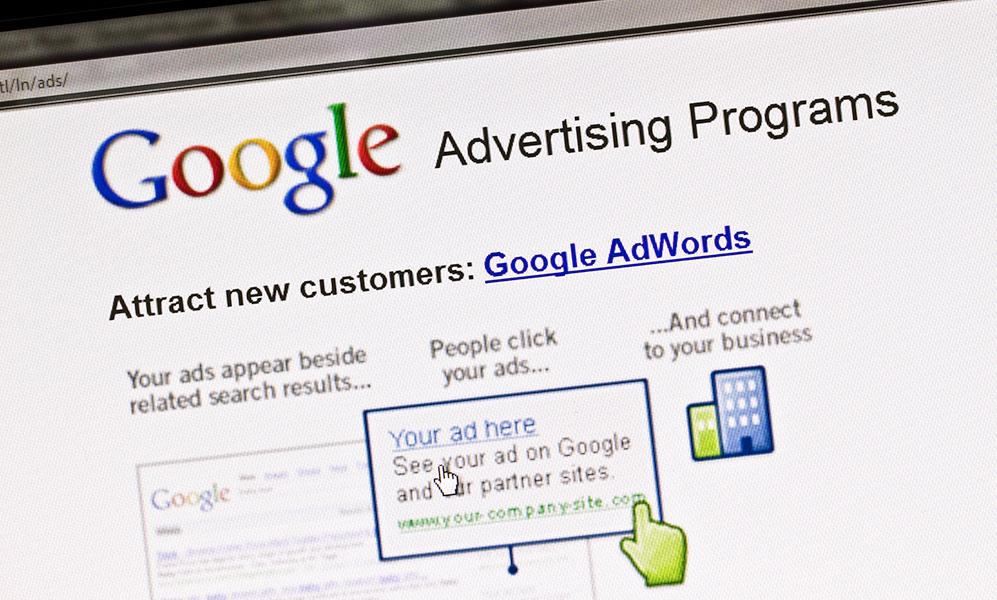
Small and medium-sized law firms, with limited resources, depend on their marketing efforts to generate leads. Even if leads are flowing, many firms still struggle to convert enquiries into paying customers.
So, with 2022 fast approaching, now is the opportune time to consider the improvements you can make to your law firm’s marketing strategy.
What are the immediate changes that will deliver the greatest impact for your business in the year ahead? What can you do better in 2022?
We’ve narrowed down a long list to three areas of sales and marketing that will have the greatest positive impact on revenue for your law firm in the year ahead.
1. Gain rankings with law firm SEO.

SEO has certainly evolved but high organic rankings remain the lifeblood of law firm marketing. You should be investing a portion of your marketing budget into the right SEO strategies.
Why? Consider the facts about legal consumer behavior:
- 96% of people seeking legal advice use a search engine.
- 74% of consumers visit a law firm’s website to take action.
- 62% of legal searches are non-branded (i.e., generic terms like Denver person injury attorney).
- 72% of people seeking legal advice only contact one attorney.
If you can get the right prospects (your target audience) to your website and provide the information there to answer their main queries, you will increase the number of paying clients. Period.
How do you do that?
Law firm SEO is sometimes made out to be a complex concoction of magical spells. It is not. The following proven types of actions taken consistently over time will get your website ranking higher:
Keyword research
Identify words or phrases most frequently searched for by your target audience. Keywords form the foundation of SEO campaigns and should be included in content, metadata, URLs, etc.
Keep in mind the difference between transactional queries like best DUI Lawyer in Boston (which implies that the user is looking to hire a lawyer) with informational queries like what’s the drunk driving limit for 18-year-olds in Boston?
Both are important for your SEO strategy.
Content marketing
A law firm should strive to become a topical authority, i.e., the go-to resource for the legal topics you specialize in.
If you can demonstrate to Google that you have a broad yet deep comprehension and mastery of a topic, you will be rewarded with higher rankings. You can achieve this through the content you develop, focus on original, well-referenced and researched content that provides valuable insight into a legal topic.
Try to create regular, up-to-date, long-form articles, practice pages, FAQs, videos, etc. that go into considerable depth. Keep them easy to follow, well-structured, and professionally written/made.
On-site SEO
On-site search engine optimization improves a website’s architecture, content, and code to make it more search engine friendly. You will likely need technical assistance with this, but it helps to understand what types of actions it involves.
On-site SEO is largely about optimizing URL structures, adopting Schema markup language, getting titles and meta descriptions professionally written, improving page load speed, optimizing keyword density, using multimedia, and so on.
Local SEO
Most small and medium-sized law firms target the local area as a rich potential source of new clients.
To do that successfully, local search strategies are essential. The “local panel” dominates the Google search engine results page (SERP) when a specific location is searched for. This means that you need to optimize your Google My Business profile, build citations in local directories, and ensure that local data aggregators are kept up to date with your business’s details.
Lawyer link-building
Every backlink that points to your website is like a digital “vote of confidence” to Google. That means the more of these backlinks you get, the more you will be rewarded with higher rankings—especially if the linking sites are authority sites.
To get more backlinks, focus on guest posting, creating infographics, writing high-quality blog articles, creating eBooks and reports, publishing books, podcasting, gathering awards and joining respected associations.
Reputation management and reviews
If you’re not yet actively gathering and managing reviews to protect your reputation, make 2022 the year when you start.
Almost all potential clients read online reviews before deciding on the law firm to use—and around three-quarters of these only read the most recent ones.
So, a strategy for continually gathering testimonials is important: ask for reviews, set expectations as part of your onboarding process, make it easy for clients to review your firm on chosen platforms (Google, Avvo, Yelp, Facebook, etc.) and try to respond to all reviews.
2. Generate clicks with Google Ads & LSAs.

Google Ads and Local Service Ads (LSAs) are still some of the best options for attracting clients.
To fully understand the importance of Google Ads and Local Service Ads (LSAs), we need to consider the current anatomy of the Google SERP.
Pages now display (in order from the top):
- Local search ads
- Google search ads
- Local search results
- Featured snippets
- Local panel (right-hand side panel)
- Organic search results
- “People also ask” section
As you can see, ads top the lot. The organic search results remain important, but they have been shifted down the page and are eclipsed by Google Ads.
As with SEO, however, most law firms have not adopted best practices with Google Ads. They often do it themselves, lose money, and give up.
15 quick Google Ads and LSA tips
The following are best practices for your paid advertising campaigns:
- Target specific, long-tail keywords. Forget lawyer or personal injury attorney, which are too expensive. Instead, target brain injury lawyer free consult or medical malpractice lawyer free consult.
- Specify negative keywords. These are terms that you do not want your ad to show up for (e.g., cities outside your target region).
- Use dynamic keyword insertion (DKI) in the ad copy. If you have multiple keywords in an ad group, DKI allows you to have one generic ad serving all these keywords.
- Target zip/postal codes. Your target audience may search for suburbs, not just cities—and targeting these suburbs allows you to be more specific.
- Create local search ads (LSAs). Linking your Google My Business account to display your address/reviews in local search results increases click-throughs (they display above everything else in Google’s SERP).
- Optimize your keyword bidding strategy. Targeting positions 2–4 rather than the top with ads may be a better strategy as searchers may be more selective with clicks.
- Bid on your own branded term. Your ad doesn’t come up automatically if someone searches for your brand so make sure you own it or someone may “brand-jack” you.
- Use device bid adjustments. Once you know the best performing devices among your target audience, apply bid adjustments for these devices.
- Separate your ad groups by theme. This allows you to segment your keywords based upon your audience’s intent and make campaign management more effective.
- Use a variety of keyword match types. You should try to use broad match, phrase match, exact match, and negative match.
- Use “single keyword ad groups” for highest-performing keywords. The best performing keywords are prized assets that should be optimized accordingly.
- Integrate keywords into your ads. Your main keywords should be used in the ad headline, display URL, ad extensions, and body copy.
- Test the messaging strength in your ad copy. Test and measure different versions of your copy to see which headline, body text, and call to action work best.
- Use ad extensions. Use site link, location and callout extensions as well as structured snippet extensions to help you be more specific about your services and your business.
- Leverage remarketing lists for search ads. A simple tracking code on your website lets you retarget potential customers who show interest in your services.
3. Develop a winning intake process.

No marketing campaign is worth a cent if you cannot engage and convert the leads you attract into paying customers. And the best way to do it is with an effective virtual receptionist solution.
If you generate leads but not paying customers, you do not have a marketing problem. You have a sales and intake problem.
We understand that lawyers and sales go together like chalk and cheese. But all businesses need to engage leads to convert them—even if they don’t always call it “sales.”
Ultimately, your intake process with a lead is essential to the success of your firm.
Have you created a process whereby a lead calls in and is instantly made to feel like they are in the right place?
Or do you drive leads away with unanswered calls, unhelpful receptionists, overworked lawyers with no time to spend with prospects, and other negative signals that tell a potential client to “move on?”
Keep in mind that 66% of consumers say instant, on-demand engagement is a critical decision-making factor when purchasing new goods or services.
Customers today expect quick answers, personalized service, and to be able to connect in the way they prefer. It is no different with potential legal clients.
In fact, when people contact a law firm, they are usually going through a stressful time, trying to find answers and peace of mind. A friendly voice that welcomes them, calmly answers questions, and convinces them that they are in the right place is often a huge relief.
That’s where Ruby comes in.
If you’re looking to ensure that your powerful marketing efforts are not wasted—and end up converting into paying customers—Ruby makes sure that people who are looking for your services, see an easy way to connect, and are superbly looked after.
Get more out of your marketing efforts with a winning intake process in 2022
A marketing strategy without a smooth intake process means that leads won’t convert. And an intake process with no leads is of no use to any business.
The two work together in tandem.
When you consider how to improve the marketing elements of your law firm in the months ahead, also consider how successful marketing must be backed up by a solid intake process to really see the gains that your law firm is looking for.
About the author
Calin Yablonski is the Managing Director and lead strategist at JurisPage. Since 2009, he has worked with law firms to design websites and develop comprehensive Search Engine Optimization (SEO) and Google Ads marketing campaigns.
About Uptime Legal
Uptime Legal is a new kind of technology company. We build products that help law firms do the important work that they do.
Our company provides cloud services, document management, practice management and digital marketing services to law firms across North America.



